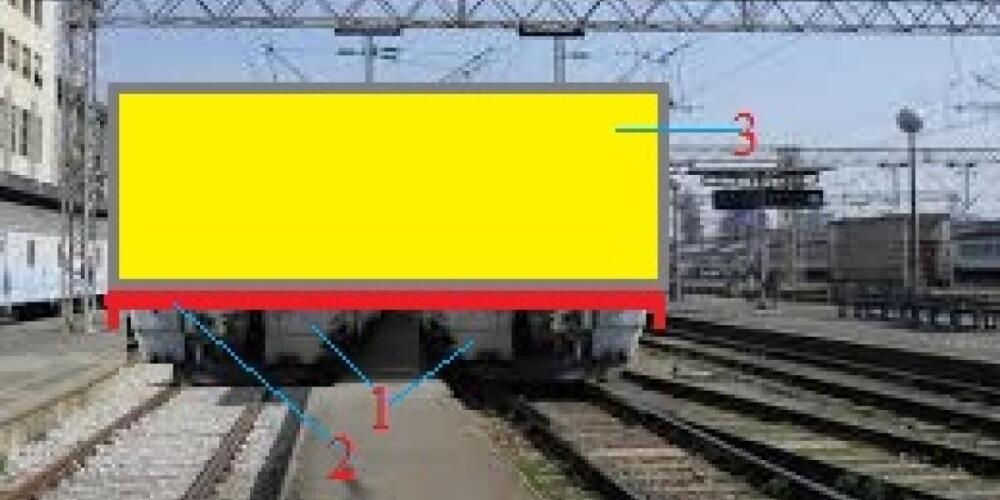
Most freight traffic for many raw materials is transported by rail. Only more expensive goods that need to reach their destination quickly are mostly transported by trucks. Very expensive products are worth transporting by plane. Bulky loads wider than 4 meters are often transported by special trucks or ships.
Bulky loads with a width of up to 8 m could, with a little innovation, also be transported by railways, but only on routes where there are two-track railways. On such routes, flat freight wagons could be placed on both tracks, and these parallel wagons (1) should be connected by transverse beams (2). A wide wagon (3), which could be up to 8 m wide, could be placed on these cross beams (2). , in case the distance between the stripes changes somewhere. In order for these transverse beams (2) not to slide off the parallel wagons (1), they must have elastic stops at the end that keep them at an equal distance from the outer edge of the parallel wagons (1).
On such a wide wagon (3), very wide loads of various purposes could be placed, such as prefabricated houses, smaller ships with a width of more than 4 m, or very wide vehicles.
In military use, tanks or combat vehicles could be placed in such large wide wagons (3) in a transverse position, so that in case of need they could suddenly get off the wagon by lowering the sides to the ground. Tanks placed on the wagons transversely could also work while driving thanks to the fact that the stability of such wide wagons on two tracks would be much higher. With these changes in the use of two-track railroads, armies could move their battle groups from one terrain to another much faster and easier, without using roads that tanks can damage.
In order to adapt the railways for the transport of such wagons, on all routes where there are two-track railways between them, all poles and signs should be removed and moved to the outside.
Tags
Featured articles